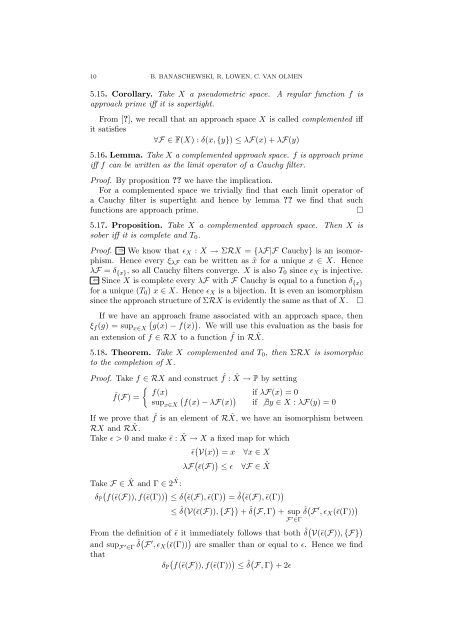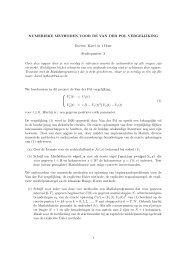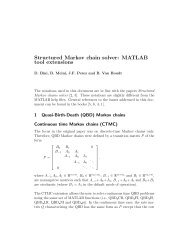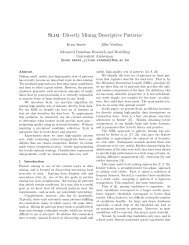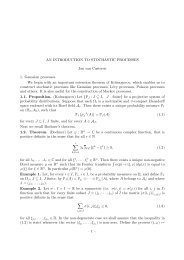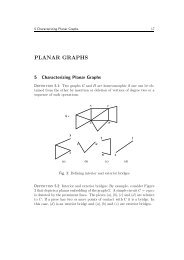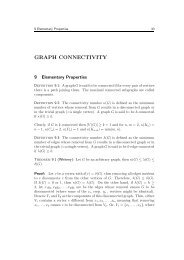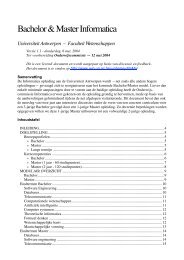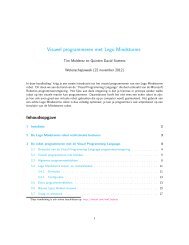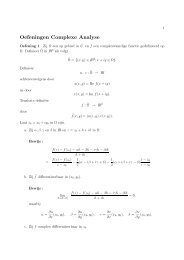SOBER APPROACH SPACES 1. Introduction In this article we will ...
SOBER APPROACH SPACES 1. Introduction In this article we will ...
SOBER APPROACH SPACES 1. Introduction In this article we will ...
Create successful ePaper yourself
Turn your PDF publications into a flip-book with our unique Google optimized e-Paper software.
10 B. BANASCHEWSKI, R. LOWEN, C. VAN OLMEN5.15. Corollary. Take X a pseudometric space. A regular function f isapproach prime iff it is supertight.From [?], <strong>we</strong> recall that an approach space X is called complemented iffit satisfies∀F ∈ F(X) : δ(x, {y}) ≤ λF(x) + λF(y)5.16. Lemma. Take X a complemented approach space. f is approach primeiff f can be written as the limit operator of a Cauchy filter.Proof. By proposition ?? <strong>we</strong> have the implication.For a complemented space <strong>we</strong> trivially find that each limit operator ofa Cauchy filter is supertight and hence by lemma ?? <strong>we</strong> find that suchfunctions are approach prime.□5.17. Proposition. Take X a complemented approach space. Then X issober iff it is complete and T 0 .Proof. ⇒ We know that ɛ X : X → ΣRX = {λF|F Cauchy} is an isomorphism.Hence every ξ λF can be written as ˜x for a unique x ∈ X. HenceλF = δ {x} , so all Cauchy filters converge. X is also T 0 since ɛ X is injective.⇐ Since X is complete every λF with F Cauchy is equal to a function δ {x}for a unique (T 0 ) x ∈ X. Hence ɛ X is a bijection. It is even an isomorphismsince the approach structure of ΣRX is evidently the same as that of X. □If <strong>we</strong> have an approach frame associated with an approach space, thenξ f (g) = sup x∈X(g(x) − f(x)). We <strong>will</strong> use <strong>this</strong> evaluation as the basis foran extension of f ∈ RX to a function ˆf in R ˆX.5.18. Theorem. Take X complemented and T 0 , then ΣRX is isomorphicto the completion of X.Proof. Take f ∈ RX and construct ˆf : ˆX → P by settingˆf(F) ={ f(x) if λF(x) = 0sup x∈X(f(x) − λF(x))if ̸ ∃y ∈ X : λF(y) = 0If <strong>we</strong> prove that ˆf is an element of R ˆX, <strong>we</strong> have an isomorphism bet<strong>we</strong>enRX and R ˆX.Take ɛ > 0 and make ¯ɛ : ˆX → X a fixed map for whichTake F ∈ ˆX and Γ ∈ 2 ˆX:¯ɛ ( V(x) ) = xλF (¯ɛ(F) ) ≤ ɛ∀x ∈ X∀F ∈ ˆXδ P(f(¯ɛ(F)), f(¯ɛ(Γ)))≤ δ(¯ɛ(F), ¯ɛ(Γ))= ˆδ(¯ɛ(F), ¯ɛ(Γ))≤ ˆδ ( V(¯ɛ(F)), {F} ) + ˆδ ( F, Γ ) + supF ′ ∈Γˆδ ( F ′ , ɛ X (¯ɛ(Γ)) )From the definition of ¯ɛ it immediately follows that both ˆδ ( V(¯ɛ(F)), {F} )and sup F ′ ∈Γ ˆδ ( F ′ , ɛ X (¯ɛ(Γ)) ) are smaller than or equal to ɛ. Hence <strong>we</strong> findthatδ P(f(¯ɛ(F)), f(¯ɛ(Γ)))≤ ˆδ( F, Γ)+ 2ɛ


